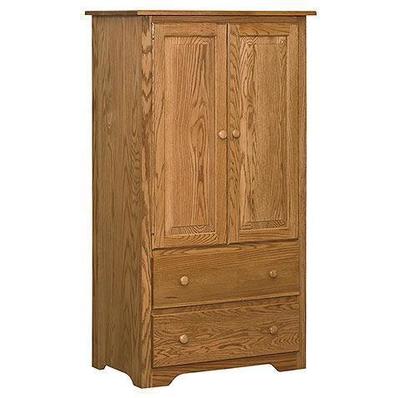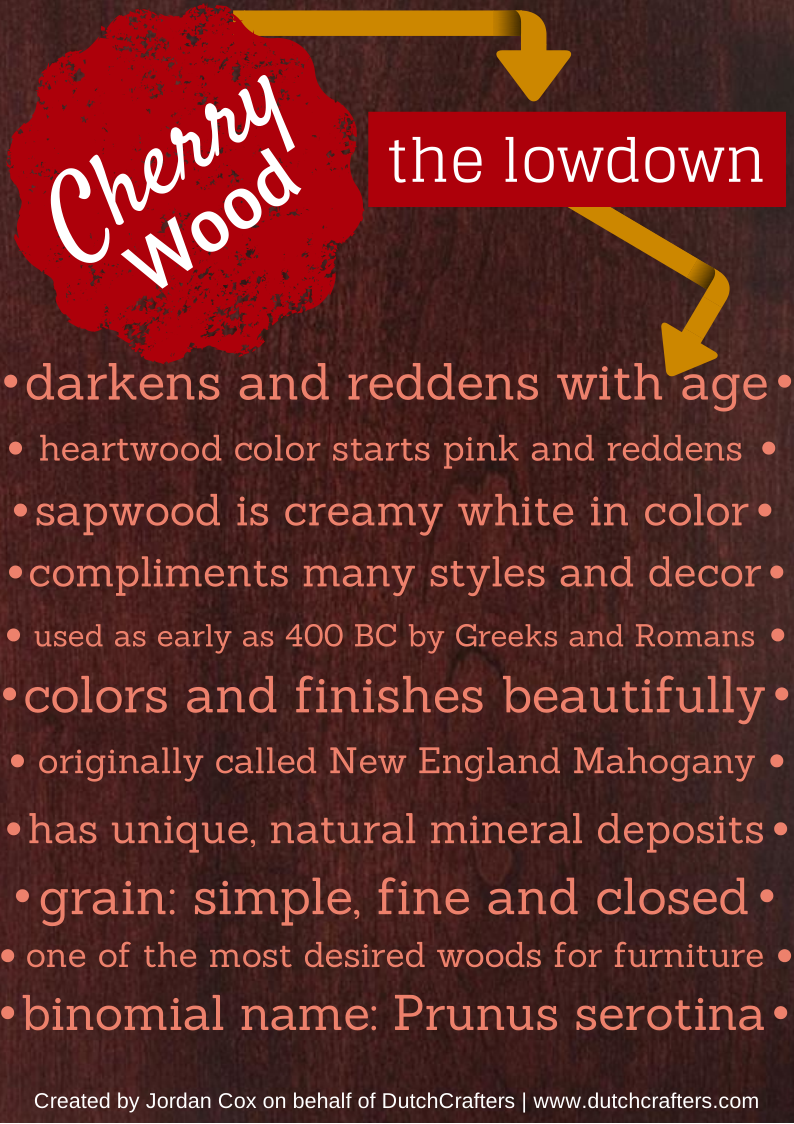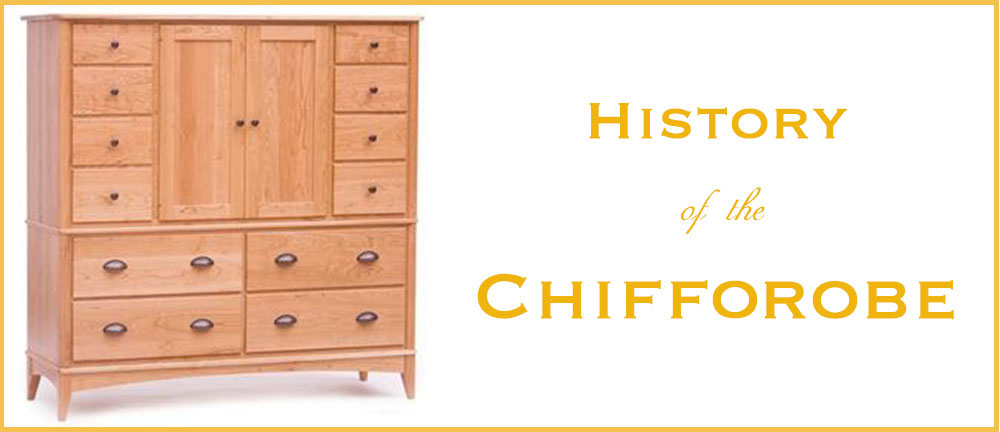
History of the Chifforobe
To properly share the history of the chifforobe we have to go back in time and ask ourselves, what did we do with clothing before closets were invented?
Centuries ago humans had no need for storage dedicated to clothing since they possessed so little of it. As methods for producing clothing and desirable styles developed, the need for a storage solution was born. Some early solutions included woven baskets and wood chests. Roman soldiers used simple wooden boxes to transport their weapons and armor. The wooden boxes evolved into grand cedar chests that the wealthy used to protect their clothing. These cedar chests eventually led to the creation of the armoire during the 17th century.
The armoire, or wardrobe, was a tall, wooden, stand-alone cupboard where hanging clothes could be stored. It typically had two doors that opened to a spacious area on top with shelves underneath. By the 18th century, the wardrobe had become the most popular way for the wealthy to store their clothes.
The Amish Ironwood Armoire with 3 Drawers offers a rustic style wardrobe perfect for a country cottage or cabin style collection.
The chifforobe was first introduced in the Sears Roebuck catalog at the start of the 20th century. Originating in the U.S., the chifforobe combined a chiffonier (a French furnishing featuring drawers) and a wardrobe (a large movable cupboard used to store hanging clothes). Sears described the chifforobe as an original invention since it was the first piece designed to hold both hanging and folded clothes.
The chifforobe was the perfect combination of storage space and was also transportable, unlike traditional closets.
The Amish Vineyard Chifforobe offers versatile storage options when closet space is limited.
In one combined unit the chifforobe offered a tall closet for hanging clothes along with a chest of drawers or shelves.
As closets were built and became popular, the need for chifforobes declined.
__
Today chifforobes are often used for the following:
Reducing bedroom clutter
The Amish San Marco Chifforobe offers multiple drawers and compartments to keep clothing and accessories off the floor and bed.
 As entertainment centers
As entertainment centers
The Rustic Barnwood Wardrobe offers a spacious cabinet behind its wood doors that is perfect for housing a television and entertainment fixtures.
 Saving floor space
Saving floor space
The Amish Le Chateau Chifforobe offers 14 drawers, functioning as a dresser in addition to a wardrobe.
 For guest room storage
For guest room storage
The Amish Pleasant Valley Wardrobe is just right for towels, candles, soaps, and extra blankets.
 As a playroom closet
As a playroom closet
The Amish English Shaker Armoire is perfect for hanging dress up clothes and storing toys and games in a nursery, playroom, or child’s bedroom.
As a craft station
With various size drawers, cabinets, and a full closet, the Amish Oberlin Mission Chifforobe is the right cabinet for craft supplies, wrapping paper, and scrapbooking items.
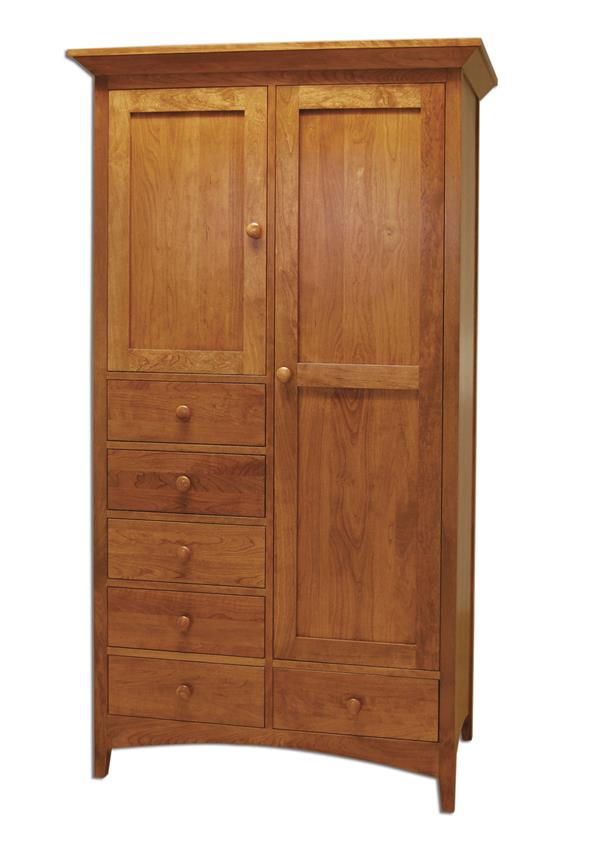
Chifforobes are a great choice for apartments and townhouses with no or limited closet space, and are charming space-saving solutions. Select from a variety of Amish-made styles and custom options to create a beautiful closet dresser combo for your home.



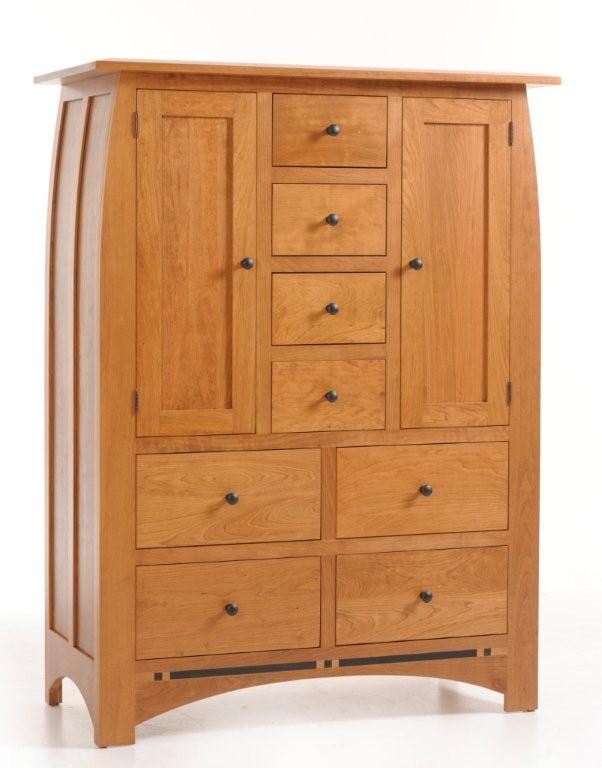

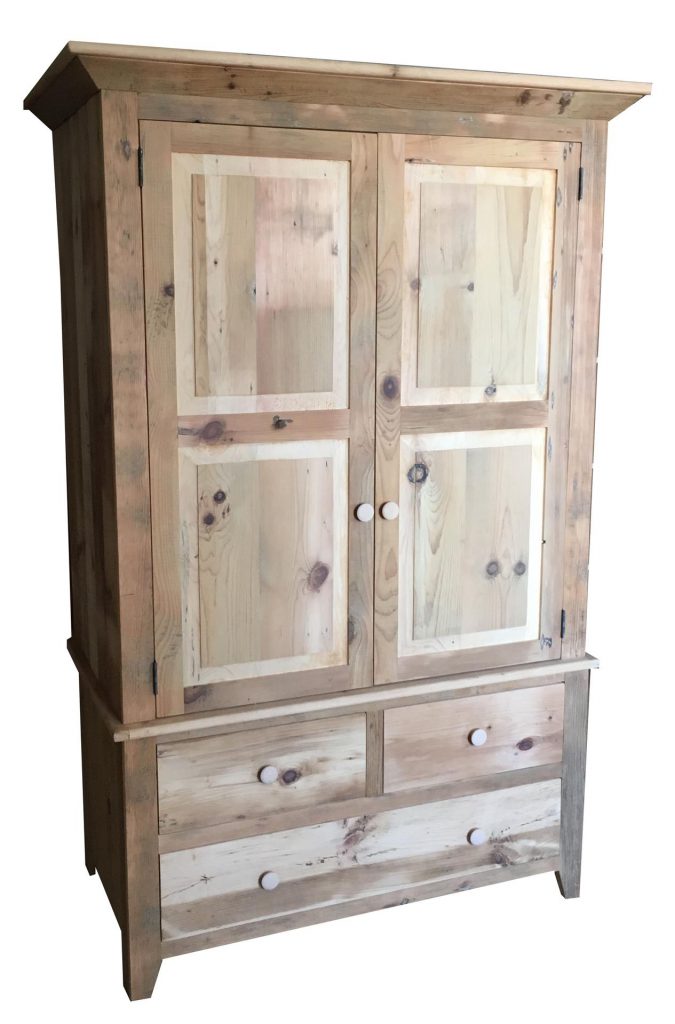 Saving floor space
Saving floor space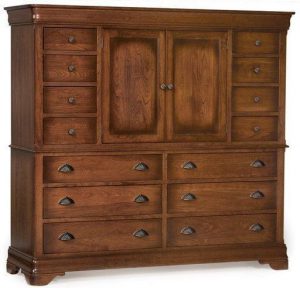
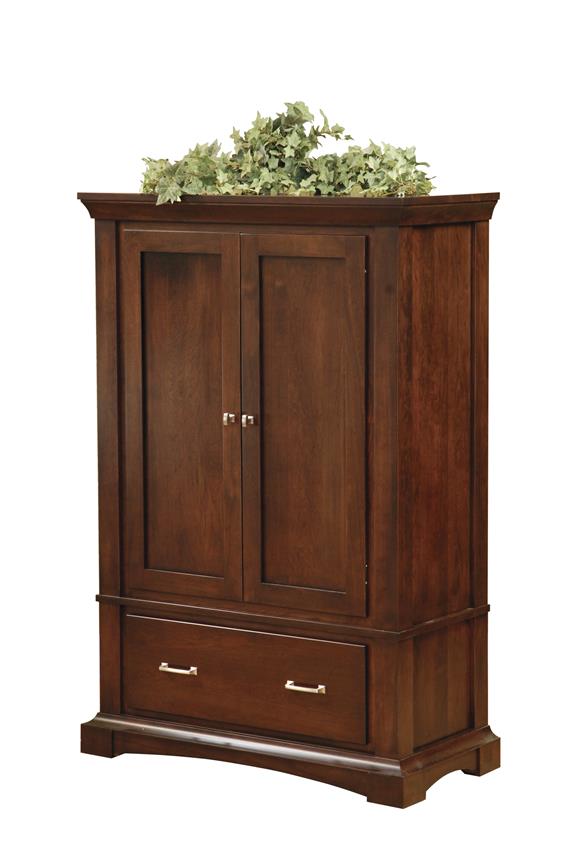 As a playroom closet
As a playroom closet